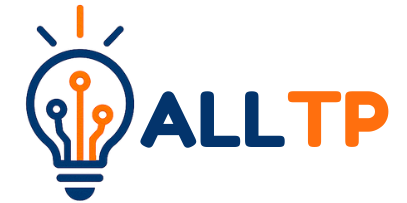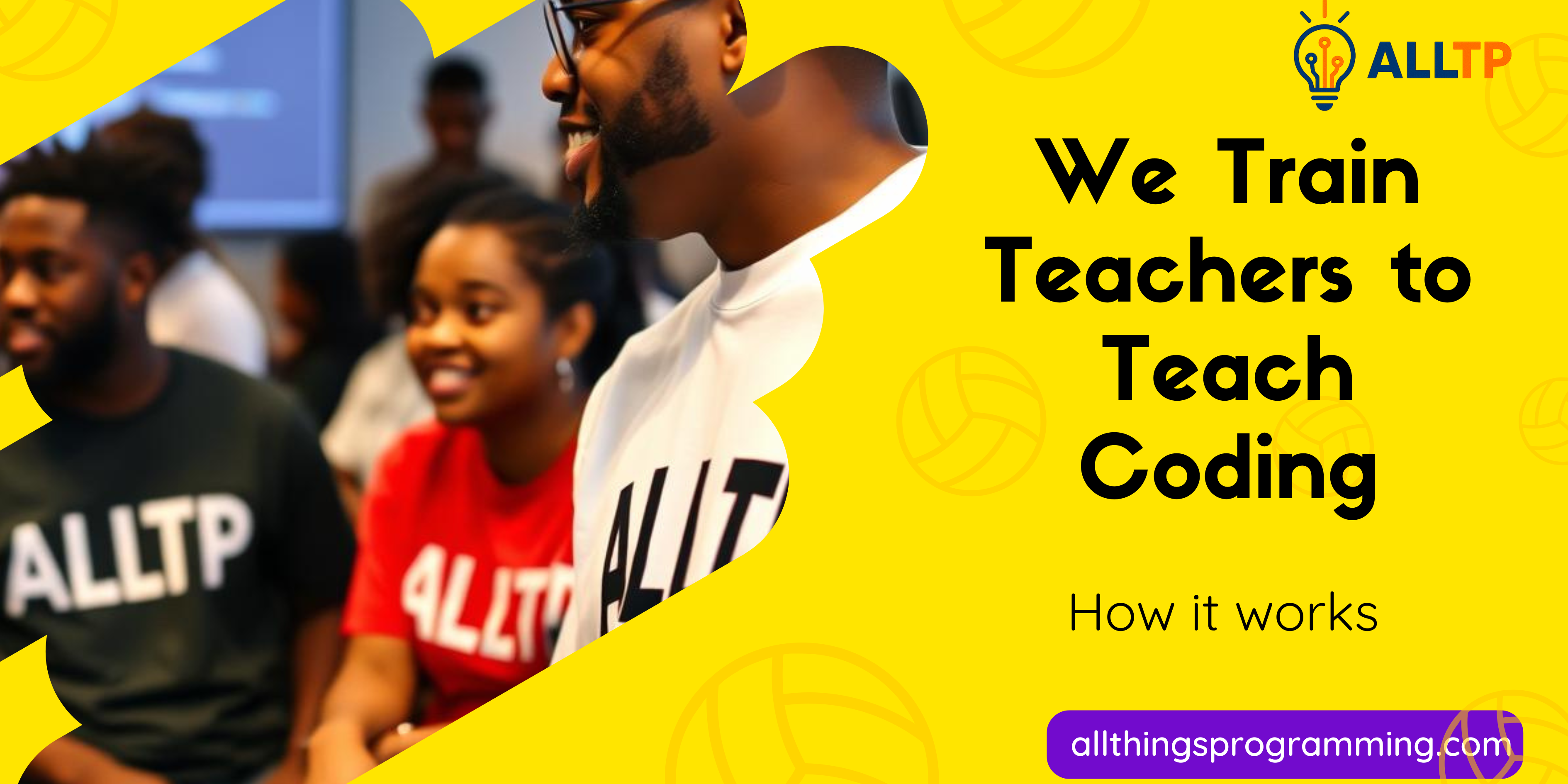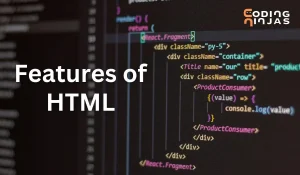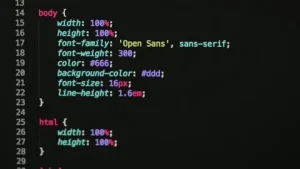In today’s digital world, coding is no longer a luxury, it’s a necessity. From mobile banking to online marketplaces, Kenya’s economy is becoming increasingly tech-driven, and digital skills are at the heart of this transformation. To prepare our youth for the jobs of tomorrow, we must start by embedding digital literacy in today’s classrooms. That begins with empowering the people who shape learning every day: our teachers.
While many coding for kids initiatives target students directly, the truth is that teachers are the true catalysts for sustainable change. A well-trained teacher can introduce hundreds of students to computer science concepts year after year, reaching far more learners than a short-term coding bootcamp ever could. By training educators, we build a system where coding becomes a core part of everyday learning, not an extracurricular extra.
With trained teachers at the helm, coding for kids becomes more accessible, consistent, and impactful across all grades and subjects.
That’s where All Things Programming comes in. Our mission is simple: equip Kenyan teachers with the skills, confidence, and curriculum support to teach coding effectively in their classrooms. Whether in a rural school with limited resources or an urban academy with full computer labs, we provide adaptable, CBC-aligned training programs that work in real-world teaching environments.
In this article, we’ll take you behind the scenes of how our program works, from onboarding and training to curriculum integration and long-term support, highlighting the strategies that have made our approach successful across Kenya.
Why Train Teachers Instead of Outsourcing?
When it comes to scaling coding education across Kenya, training teachers is not just a strategy, it’s the only sustainable path forward.
Scalability and Sustainability in Kenyan Schools
Hiring external coding instructors might work for short-term workshops or urban pilot programs, but it’s neither cost-effective nor sustainable at scale.
Kenya has over 300,000 teachers across public and private institutions, a built-in workforce ready to lead digital education, if equipped with the right tools and training.
By integrating coding into the existing teaching force, schools can deliver consistent, curriculum-aligned instruction without relying on external specialists. This approach ensures that every student, from Kitui to Kisumu, has access to quality computer science education, regardless of geography or funding.
Building Local Capacity and Fostering Tech Leadership
Training teachers isn’t just about delivering lessons. It’s about creating digital champions within schools, educators who mentor peers, innovate in the classroom, and spark interest in STEM careers.
Teachers who go through our program often go on to lead school-wide ICT clubs, initiate local hackathons, or advocate for tech inclusion at the county level.
This ripple effect builds a culture of innovation within schools and ensures that digital literacy is not a passing trend but a lasting shift in the education landscape.
Success Stories Across Kenya
In Narok County, a Grade 6 science teacher trained by All Things Programming now integrates Scratch projects into her weekly lessons, helping learners grasp everything from plant growth cycles to geometry through animation.
Meanwhile, in Nairobi’s Eastlands area, a headteacher introduced Python basics during math class, reporting improved problem-solving skills among students who previously struggled with logic-based tasks.
These are just two of many examples where teachers, not external trainers, are leading the charge in Kenya’s digital transformation. This is the impact of coding Kenya: empowering educators at the grassroots level to create real change in classrooms, and equipping learners with the tools to thrive in a digital-first world.
Step-by-Step: How We Train Teachers to Teach Coding
At All Things Programming, our teacher training model is practical, inclusive, and built for the real-world demands of the Kenyan classroom. Here’s how it works:
Step 1: Onboarding and Digital Readiness Assessment
Before any training begins, we conduct a digital readiness assessment to understand each teacher’s starting point. Some have prior experience using digital tools, while others are just learning how to operate a computer. That’s why we avoid one-size-fits-all approaches.
- Beginners are introduced to basic ICT tools, typing skills, and internet navigation.
- Intermediate users dive into block-based coding like Scratch and start exploring HTML/CSS.
- Advanced users are fast-tracked into more technical modules, including Python programming and debugging techniques.
This step ensures that every teacher receives the support they need, without feeling overwhelmed or left behind.
Step 2: Interactive Coding Bootcamps
Our core training experience happens during intensive coding bootcamps, available both in-person and online. These are not lecture-heavy sessions; they’re hands-on, project-based, and highly collaborative.
Teachers build real-world projects using:
- Scratch to teach logic and animation
- HTML/CSS to design simple websites
- Python to introduce basic programming concepts
Each bootcamp includes peer-to-peer activities, coding labs, and one-on-one support from experienced facilitators. We also incorporate culturally relevant examples and local challenges to keep learning engaging and meaningful.
By the end of the bootcamp, teachers walk away with confidence and working lesson demos they can immediately apply in class.
Step 3: Curriculum Integration
Knowing how to code is one thing. Teaching it effectively, within the CBC framework, is another. That’s why the final phase of our training focuses on seamless curriculum integration.
We help teachers:
- Align coding lessons with CBC learning outcomes (such as problem-solving, digital literacy, and creativity)
- Incorporate programming into core subjects like Math, Science, and English
- Use lesson planning tools and student project templates tailored to the local context
The goal is to ensure that coding doesn’t feel like an “extra subject,” but rather a natural extension of what’s already happening in class.
Professional Development and Ongoing Mentorship
Training doesn’t end after the boot camp. At All Things Programming, we believe in continuous growth because technology and education are always evolving. That’s why we offer structured, ongoing support to every teacher we train.
Monthly Refresher Workshops and Coding Challenges
Every month, teachers are invited to online refresher sessions that revisit key concepts, introduce new tools, and allow space for Q&A. These workshops are bite-sized, practical, and designed to fit into a teacher’s busy schedule.
We also organise friendly coding challenges, encouraging teachers to sharpen their skills by building small projects, like interactive quizzes, animations, or student games. These challenges keep learning fun and fresh while reinforcing long-term retention.
Access to Online Communities for Support and Updates
Once trained, teachers gain lifetime access to our online learning community, where they can:
- Ask questions and get peer support
- Share classroom experiences and sample projects
- Receive updates on new tools, lesson plans, and coding trends
This network of like-minded educators fosters collaboration and helps break the isolation many teachers face, especially in remote or under-resourced schools.
Certification and Career Development Pathways
All participants who complete the program receive a certification in Coding Instruction for CBC Classrooms, which can be added to their professional teaching profile. More importantly, they gain new opportunities to:
- Lead ICT initiatives at their schools
- Apply for digital education fellowships
- Take on mentorship roles in county-level programs
By investing in our teachers, we’re not just building skills, we’re creating leaders in Kenya’s digital transformation.
A Global Perspective on Teacher Training
While our programs are grounded in the Kenyan context, they’re also informed by successful international models. Across the world, countries facing similar challenges, such as limited ICT infrastructure or rural school networks, have built effective coding education systems by starting with teacher empowerment.
At All Things Programming, we study these models to understand what works, adapt it locally, and scale it sustainably.
How International Models Guide Our Approach
Global best practices show that the most impactful computer science programs prioritize teacher training over technology investment alone. For example:
- In the U.S., teacher-led coding programs have outperformed one-time bootcamps in student outcomes.
- In Latin America, integrating coding into core subjects (not as standalone units) has boosted student engagement and literacy levels.
- In Southeast Asia, national ICT champions often emerge from trained educators, not outside experts.
Inspired by such models, we’ve built our own curriculum to reflect both global standards and local realities, ensuring Kenyan teachers are not just keeping up, but leading.
Recommended Reading: A Research-Based Approach
For readers interested in the research behind this philosophy, we recommend the report:
Teacher Preparation in Computer Science, published by the University of Texas at Austin.
This report offers detailed insights into how countries prepare teachers for computer science instruction and why long-term support and contextualised training are key to success.
Impact in the Classroom: Success Stories
The real power of our teacher training program becomes visible not in workshops or bootcamps, but in the everyday life of the classroom. When teachers gain the skills and confidence to teach coding, they transform how students learn, think, and create.
Case Study: Coding in Grades 4–7 at a Public School in Kajiado
In 2024, All Things Programming partnered with a school in Kajiado County to introduce coding across Grades 4 to 7. The school, like many others, had limited infrastructure: one shared ICT room, a few desktop computers, and inconsistent internet.
But what it lacked in resources, it made up for in committed teachers. After completing our training, four educators integrated Scratch and HTML projects into Math, Science, and English lessons. Grade 5 students animated folktales as part of their English oral narratives unit. Grade 6 learners created interactive quizzes on food chains and environmental topics.
“Before this, I thought coding was for engineers or university students,” said Ms. Namunyak, a science teacher at the school. “Now, I use Scratch to explain complex topics like pollination and my pupils actually look forward to science class.”
Student Reactions and Results
The transformation wasn’t just visible among teachers, it echoed in the students themselves.
“I made my first game where a cheetah chases a gazelle,” said Tobias, a Grade 6 student. “Now I want to be a game developer when I grow up.”
Attendance rates improved, especially for lessons that included tech integration. Teachers reported increased engagement, improved critical thinking, and higher collaboration among students, even those who previously struggled in class.
This is just one example among dozens. Across the country, teachers trained through All Things Programming are turning coding into a classroom language that speaks to creativity, problem-solving, and the future of work.
How Schools Can Join the Program
Getting started with coding education doesn’t have to be complicated or expensive. At All Things Programming, we’ve made it easy for schools across Kenya to integrate our teacher training program into their existing structures, regardless of size, location, or budget.
A Simple Onboarding Process
Schools can begin by filling out a short readiness and interest form, which helps us understand their current ICT capacity, number of teachers, and training needs. From there:
- We schedule an orientation with the school’s leadership team.
- We tailor the training package based on the teachers’ digital literacy levels.
- We launch the program through online or in-person bootcamps, followed by monthly check-ins.
Whether your school has a full computer lab or just a projector and a few laptops, we’ll adapt to your context.
Affordable Packages for Public and Private Institutions
We understand the budget constraints schools face, which is why we offer tiered pricing plans:
- Public schools receive subsidised rates through donor support or government partnerships.
- Private schools and academies can choose from flexible packages based on staff size and preferred delivery mode (online, hybrid, or in-person).
We also offer institution-wide licenses that provide access to all our teacher training materials, curriculum templates, and mentorship support for a full year.
“It was the best investment we made this year,” said Mr. Obiero, headteacher at a partner school in Kisumu. “Now our teachers are more confident, and our students are more curious than ever.”
The Future of Coding in Kenyan Education
The future of Kenya’s economy and its education system will be shaped by how well we prepare our youth for the digital age. By 2030, our vision is clear: a digitally fluent generation equipped not just to use technology, but to build it. And at the heart of that vision are the teachers who light the spark.
At All Things Programming, we believe Kenyan teachers are not just implementers; they are innovators, leaders, and role models in the country’s digital transformation. With the right training, support, and community, they can guide students from passive tech users to creative tech creators.
It’s time to shift from pilot projects and isolated efforts to a national movement, one where every teacher has the skills, every student has the opportunity, and every school plays a part in building Kenya’s digital future. Whether it’s coding for beginners in Grade 4 or advanced programming in secondary school, the journey must start now. Let’s stop importing tech talent. Let’s start growing it, in every classroom, led by our own teachers.




